The weather really played a trick on us in early December. As darkness turned into sunrise somewhere behind the cloud cover, white was accumulating on green palm fronds in my line of sight as I typed at my computer.
I got the binoculars out to see what was happening. Amazingly, it was snowing.
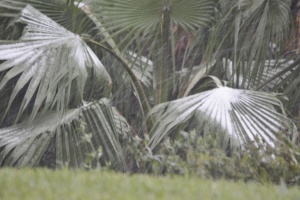
I attached the camera to a monopod and began taking photos through various windows around the house. I wasn’t about to step outside. The cats did, and just as quickly raced back indoors.
The resident anhinga, incredibly, was at his post in the middle of the resaca — snow sliding past him at a slant from the strong north winds. It accumulated on the bird’s shoulder. I wondered if he noticed the inclement conditions.
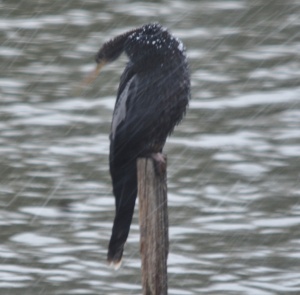
On the distant shore, one lone cormorant had its back to the resaca and head turned away from the wind.
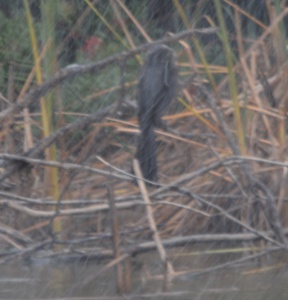
Three great white egrets were in their usual places, periodically flying off then returning to hunker down and watch the water for a possible fish to catch.
Fewer ducks were on the water, a trio of American Coots braved the falling snow and strong wind as though they were impervious to the elements.

The weather cleared after about five hours of relatively heavy snow fall, but very little accumulation. Mottled ducks, lesser scaups, a black-crowned night-heron, and a black-bellied whistling-duck lined up along yonder shoreline as peace (and sunshine) returned to the Valley.
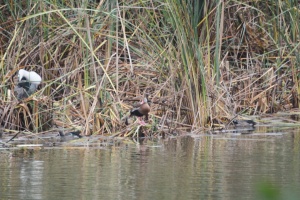
Chapter member Frank Wiseman shared a shot of his patio cactus and succulent garden, stating that the temperature never got below freezing. “All of our plants will get this welcoming shot of liquid to sink into their roots,” he said.
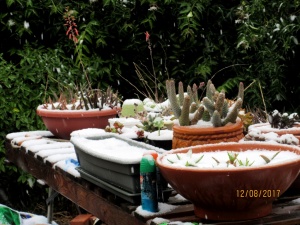
While looking out from my warm, dry perch in the house, I couldn’t help shivering as I looked at the poor, cold birds.
I did some research and what I found helped me quit feeling so sorry for them, as incredible as the information sounds. I hope it’s true. Serious birders probably already know this about birds:
According to one source, birds are adapted to survive in bad weather. It starts with the feet. Cold, wet ground is uncomfortable for humans, but not particularly so for a bird. Their spindly legs have an adaptation called counter-current exchange. We mostly lose heat, and thus feel cold, from hot blood in the skin radiating heat to the cold air. The loss of heat brings cold blood back to our body’s core, which chills us even more.
In birds, the arteries with hot blood running to the feet pass right next to the cold blood running in the veins back to the body. With this arrangement, the hot blood in the arteries passes heat to the cold blood in the veins before the blood even reaches the feet. The heat is thus returned to the body and results in cold blood in the feet. Cold feet lose very little heat to the cold ground.
Most of the information seemed to be about small birds that live in areas with harsh winters. I don’t know if it applies to the ducks, egrets and herons at the resaca.
Birds sort of hunker down and puff up when our weather gets a bit nasty, so I can believe the following information.
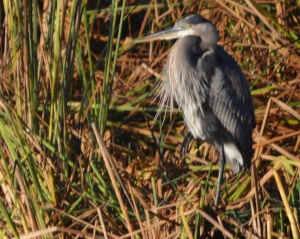
A bird’s feathers are able to trap air. This trapped air prevents cold air from circulating to the skin, thereby creating very effective insulation—and the fluffier the feathers, the better the insulation. Birds can adjust the amount of “fluff” in their feathers.
Birds might stand on one leg or crouch to cover both legs with their feathers to shield them from the cold. Birds also can tuck their bills into their shoulder feathers for protection and to breathe air warmed from their body heat.
So, now we know a little about how birds can withstand the harsh days when we don’t attempt to venture out.
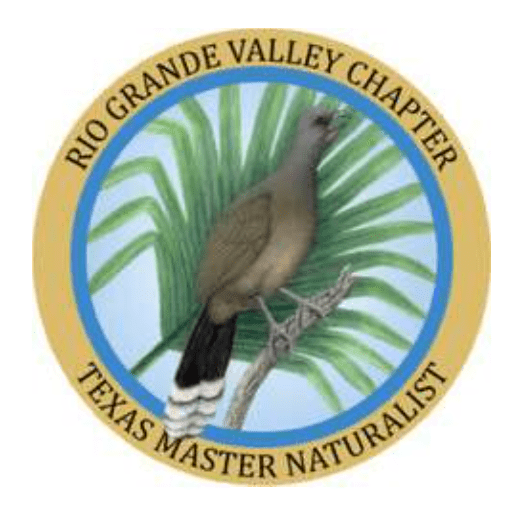
Leave a Reply